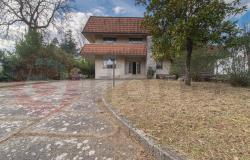Bed-bugs and ticks on Trenitalia trains
I have just read this article, it was published on the web at the end of May 2009. Following complaints about bed-bugs and ticks on their trains, Trenitalia reacted by withdrawing 508 carriages from circulation. Bug scares occur every year especially as the holiday season approaches and rolling stock which has been standing idle in sidings all over Italy is pressed into service. These carriages could easily have been used by vagrants – possibly with their dogs – as sleeping accommodation and ticks, fleas and bed-bugs could have been introduced by them and left behind. All three types of animal can live for months without feeding and can therefore come into contact with train travellers when the carriages are returned to normal circulation. It might come in handy to know how to identify them and what possible symptoms might ensue from their bites. ‘Haemo-phile’ spidersTicks, Ixodes ricinus, are not insects but belong to the Aracnidi along with spiders and scorpions. Fully-fed females are about the size of a pea, and are often carried by dogs and cats, but rarely by humans. When fully-fed the tick drops to the ground and lays, literally, hundreds of eggs. These duly hatch into small, (2-3mm), brown, six-legged baby ticks, (a fourth pair of legs develops as the tick grows) whose one aim in life is to find a warm-blooded mammal. Once on the host, the tick buries its mouth-parts in the skin to suck blood. These little animals are very difficult to pull off but will usually come away when gently tugged with the fingers or a pair of tweezers. The bite is potentially dangerous since ticks can carry a variety of rather nasty diseases including typhus as well as Lyme Disease, Rocky Mountain Fever, Relapsing Fever, which are caused by rickettsia bacteria. Bites should be disinfected and any symptoms which develop such as fever, spots, swelling near the bite and so on reported immediately to a doctor together with a history of the tick experience. Many doctors are still unaware of the rickettsia infection and a few deaths as a result of wrong diagnosis occur every year in Italy. Lazy pupae, bloody suckersFleas, pulex irritans, which are insects, are not uncommon and can be contracted during casual contact wherever groups of people are gathered together such as in cinemas or football stadiums. Fleas left behind in deserted railway carriages by humans or their animal companions can reproduce and result in hundreds of very hungry fleas ready to feed when the carriages are occupied again. The adult female flea drops her eggs on to the floor where they hatch into small, legless larvae which feed on any organic material they find. In due time they pupate and, when conditions are right, emerge as adults. It has been noted that these pupae can resist for months in a semi-dormant state. The presence of a warm blooded mammal triggers the emergence of the adult insect. They are small, (2mm), brown, laterally flattened insects with an amazing ability to run and jump. Their bites are irritating but, in Europe, rarely dangerous. Disinfectant and antihistamine preparations should soon reduce the irritation but the passenger would be well advised to remove to another, flea free, carriage. Light-abhoring bedridden vampiresBedbugs, cimex lectularius, are insects very closely related to the ‘stink bugs’ which invade our homes in the autumn looking for a place to hibernate. But, unlike the harmless, sap-sucking stink bugs, these insects feed on mammalian blood. Like fleas, bedbugs left in unattended railway carriages can multiply to produce hundreds of fasting descendants just waiting for a chance to eat. They are brown insects, horizontally flattened and about the size of a small button, (6-8mm). The bite is irritating but again, not particularly dangerous – they are not known to carry diseases. The usual disinfectant/anti histamine should relieve any irritation. Passengers finding these creatures should certainly remove to other accommodation since there is the likelihood of meeting them in large numbers. Close encounters of the bug typeNaturally, trains are not the only places where these irritating animals can be met with. I remember many years ago coming to visit Rome after a long absence. I was to stay with a friend who lived in a huge apartment in a 16th century palazzo in central Rome. I was shown to my room. A beautiful room, apparently spotlessly clean with an antique bed and a beautiful oriental carpet on the floor. After a few minutes I found that I was being attacked by hundreds of small black cat fleas! There were cats in the house and the room had not been used for some time. The problem was solved by a good dose of insecticide for the room and repellent for my legs but it was an experience as unpleasant as it was unexpected. Whilst lecturing in Cameroon, I discovered to my horror that my students, who had been given accommodation with bedding brought out of storage, were being “eaten alive” at night by hosts of bedbugs. They brought me some specimens to identify and we were able to remedy the situation by simply airing the bedding in full sunshine. Bedbugs die when exposed to sunlight. So beware! Forewarned is forearmed. Our little friends could be waiting for us anywhere. Do you have your own remedies or preventatives?
This post has not been commented yet.
Latest property in Italy
Related Questions








